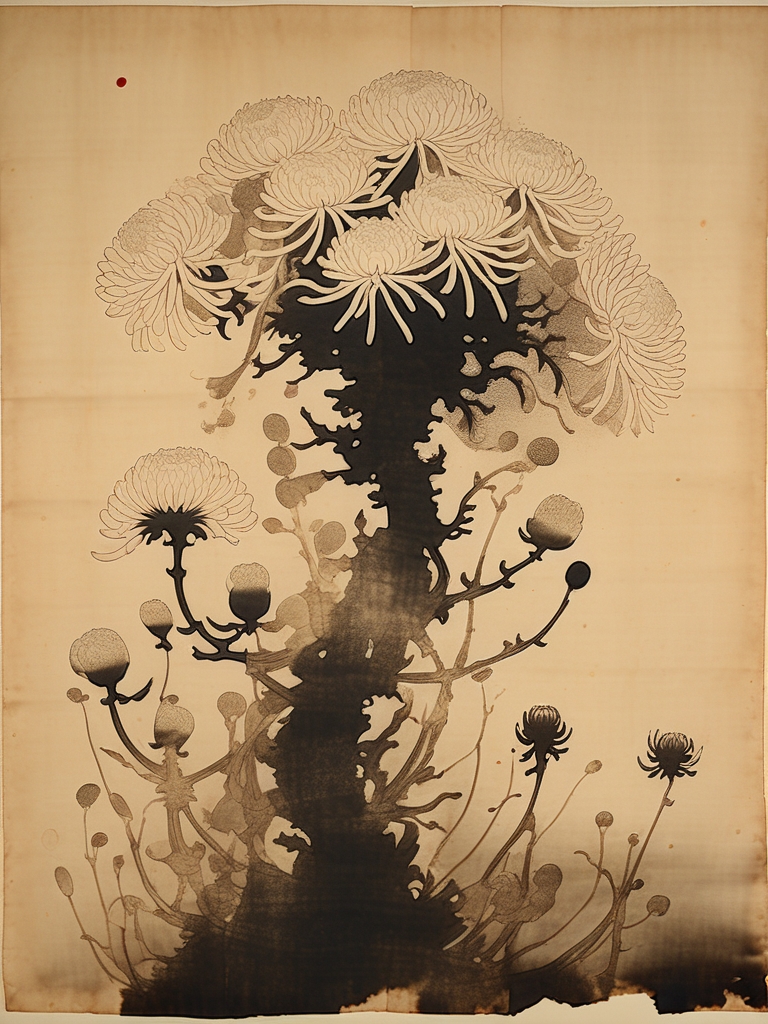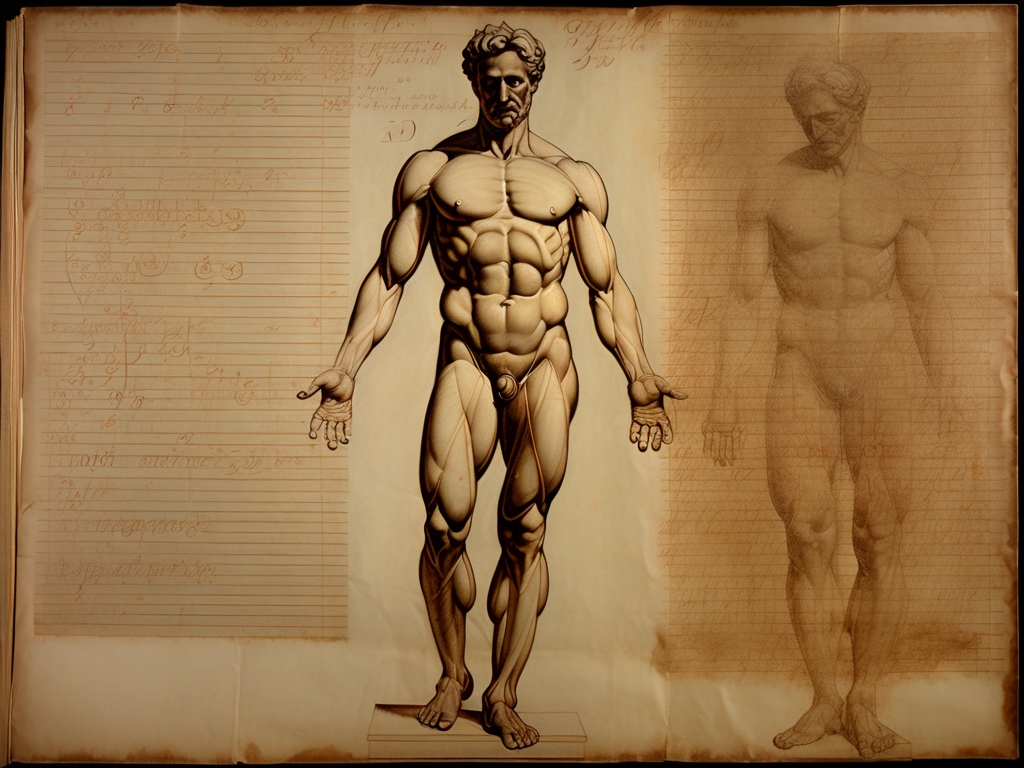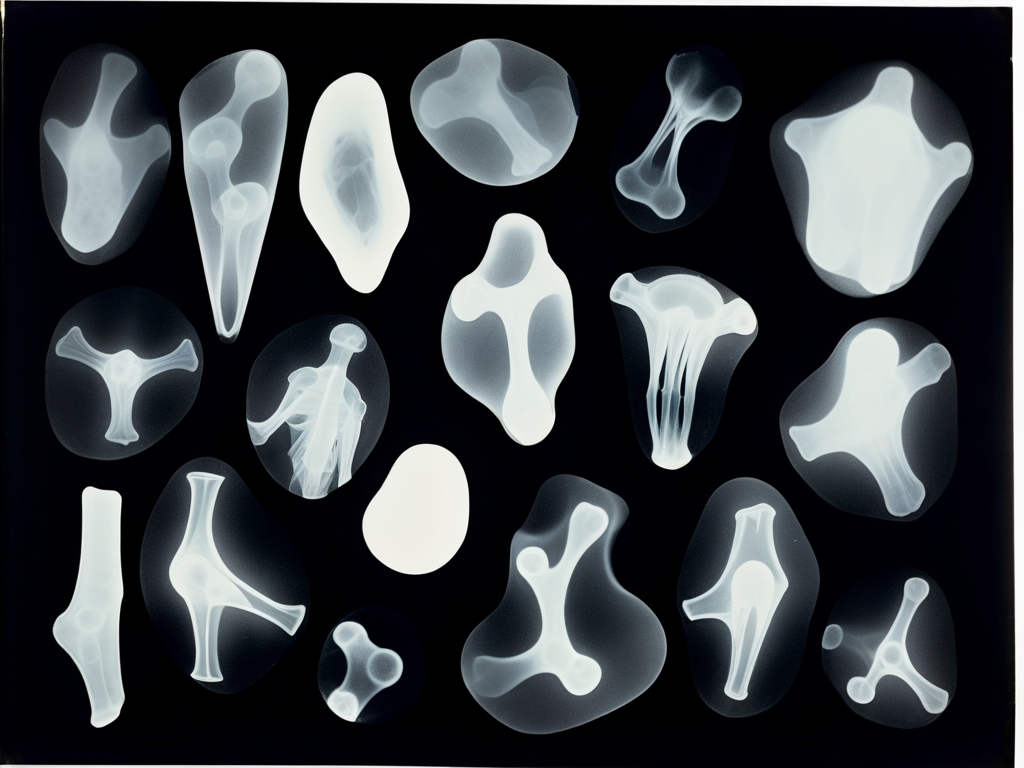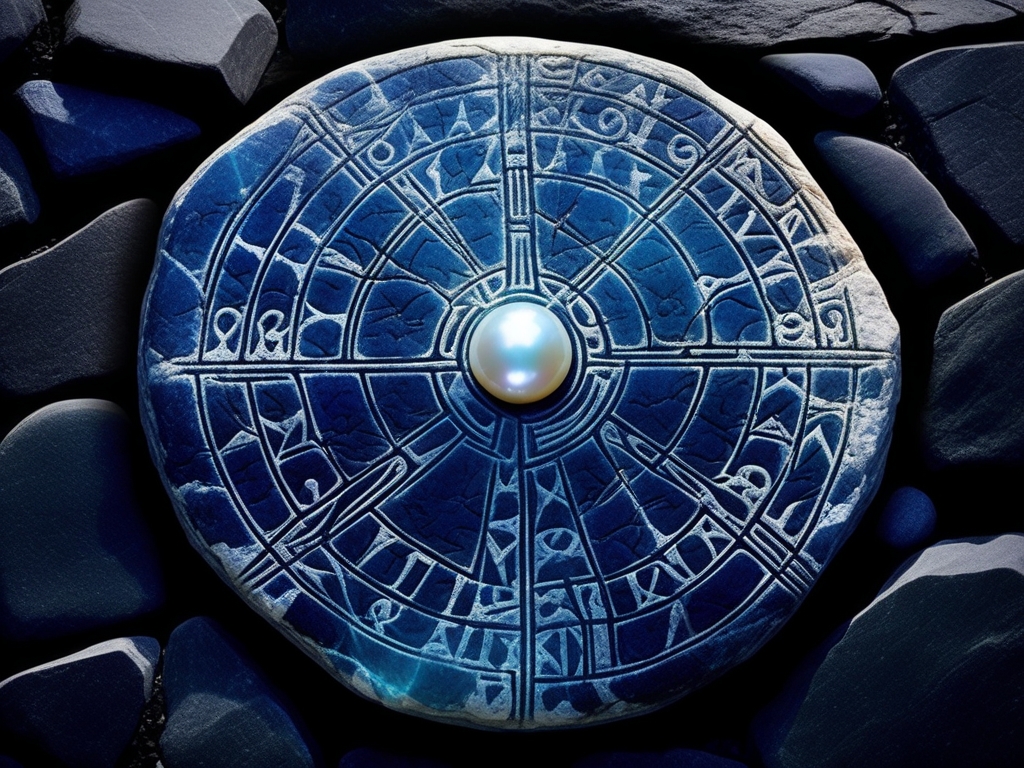The Chrysanthemum Surgeon

Behind the protective glass in Ravensfield’s East Wing hangs a scroll that captivates with a quiet magnetism before recoiling beneath an unsettling veil of revulsion. Upon its ancient parchment, faint ink lines—applied with hesitant precision—trace chrysanthemums arranged in a botanical tableau at once familiar and disturbingly surreal. Each petal unfolds like fragile tendrils; the stems weave and entwine, morphing beyond mere plant anatomy into shadowed allusions of flesh and sinew.
This enigmatic work eludes categorization within the Edo period’s customary artistic narratives. Where contemporaries sought to glorify nature’s serene order, this anonymous artist rendered flora suffused with an uncanny fusion of naturalistic detail and disturbing abstraction. The chrysanthemums emerge with exquisite care for organic complexity—each stamen and vein rendered so attentively it hints at knowledge surpassing conventional seventeenth-century botanical study.
Tracing the scroll’s provenance leads to Matsudaira Yoshimune, a minor daimyo nestled near the isolated Hida mountains. Archives describe him as patron to “medicinal arts,” though whispers conceal more arcane affiliations. His estate sheltered a secret garden where foreign healers purportedly conducted clandestine “botanical experiments” beneath moonlit veils.
Court records from 1683 recount chilling servant testimonies: midnight screams seething from Yoshimune’s chambers; visitors arriving hale but departing irrevocably altered—their movements fluidly unnatural, their eyes glazed with strange cognizance of body and essence.
The unknown artist apparently served as Yoshimune’s visual chronicler. Every brushstroke reveals an observer witnessing metamorphoses too profound—and forbidden—for straightforward depiction. The chrysanthemum stems thicken ominously toward their bases, darkening into shadowy roots tangled with abstractions recalling neural pathways; above, curling petals cluster like ethereal clusters breathing life beyond botany.
"Each bloom whispers surgical secrets that should have died with their creator." Dr. Evelyn Thorne, Curator of Anomalous Artifacts
Yoshimune's experiments transcended observation; his initial patients involuntarily became conduits for transformations blending plant form with human tissue. This shift is encoded here: lower blossoms retain floral clarity while upper blooms distort into grotesque echoes of living organisms defying botanical classification.
The garden's final harvest brought ruin—a devastation echoed pictorially by the central towering chrysanthemum whose trunk-like stem blacks out fiercely at ground level before dissipating upward as if smoke or creeping darkness drawn through intertwined vines and swollen buds. Though not literal faces, these forms conjure spectral dread aligned with ecstatic horror suggested by jagged, desperate strokes concluding the piece.
Helena Marchmont-Webb procured this scroll during her tenure uncovering artifacts from Kyoto's disbanded medical society. Her letters evoke haunting dreams filled with surgical rites beneath blooming hands—visions intensifying upon repeated engagement.
Present-day viewers share similar experiences: phantom root-like sensations creeping beneath skin; brief glimpses reflected back contain petal-shaped distortions framing countenances. This mysterious scroll transcends traditional art—it functions as a threshold between viewer and enigma, merging observer and observed into uncanny communion.




